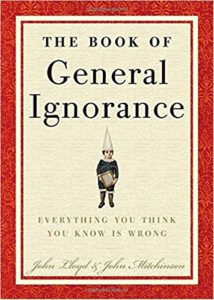Emotion in Business Blog Posts – When Facts are Not Enough

In writing business blog posts, giving them more data may not be the best way to persuade and to overcome skepticism. That’s a lesson Science News editor-in-chief Nancy Shute needed to learn. One of the first inclinations of scientists and journalists, Shute observed, was to shower skeptics with facts, sure those skeptics would “get it” when it came to, say, climate warming or the efficacy of vaccinating children.
As counter-intuitive as that may be, Shute warns, it’s time for scientists to learn how to connect with people with different views. Why? “The fear of solutions may be greater than the fear of impacts” and being bombarded with facts can make people dig in even more. People tend to seek out evidence that supports their own world view. In short, emotion trumps fact.
When it comes to climate change, for example, scientist and professor Katherine Hayhoe first provides stories that are deeply researched and fact-checked, but then offers together-we-can-fix-this messages of hope.
In blog marketing’s two horse race, as Jeremy Porter Communications teaches, “those who make the most emotionally persuasive argument win.” The goal, Porter explains, is to create a connection with your audience that makes them receptive to your message. He names seven emotions and their opposites that marketers can tap into to get an audience “from where they are to where you want them to be”:
- anger/calmness
- friendship/enmity
- fear/confidence
- shame/shamelessness
- kindness/unkindness
- pity or compassion/indignation
- envy/emulation
When it comes to business-to-consumer blog marketing, each of these emotions can be tapped to give the facts you’re providing more “depth” and power. This week’s Say It For You posts will focus on Jeremy Porter’s “Nine ways to create an emotional connection”:
Be human
“Remove the metaphorical barriers between you and your audience.” In business blogging, one goal should be to present the business or practice as very personal rather than merely transactional. Remind them there are real life humans behind the scenes, providing the product or service.
Be authentic
Don’t put on an act. Don’t “lecture” your audience. Infuse a sense of humor into the content once in a while, and include photos of your team being themselves.
Use the right frame
A speaker on clean energy, Porter says, rather than warning and threatening about the dangers of too much carbon, might describe “opportunities for people in a clean energy economy”. In blog marketing, it pays to accentuate the positive, offering readers a vision of the results they can experience through using your products and services.
In writing business blog posts, more data may not be the best way to persuade!




Follow us online!